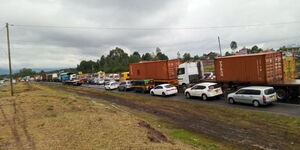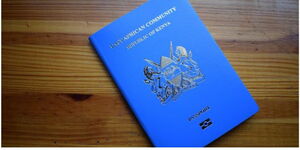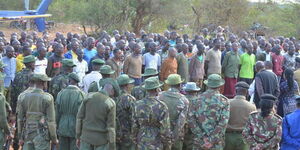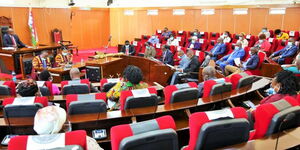Did you know that weather plays an integral part in aviation especially when the plane is airborne?
Equally, changes in weather patterns directly affect how pilots navigate within the airspace.
This was confirmed and candidly explained by the Kenya Airways Boeing Pilot Ruth Karauri who delved into the meaning of weather and air build-up in aviation.
‘Weather’
“This term is used in aviation to mean either of 2 things. On the ground, it will be in reference to atmospheric conditions while in the air it will be referencing cloud build-up,” she stated.
She further revealed that most planes were equipped with weather radar which gave information to the pilots about cloud activity on and around the flight path.
“So when airborne, pilots will usually tell Air Traffic Control (ATC) that they’re avoiding weather. This essentially means they are going around a cloud build-up,” she noted.
But why would pilots avoid clouds?
Captain Karauri delved specifically into why Cumulonimbus clouds are dangerous.
These are clouds that produce rainfall and lightning. It often produces large hail, severe wind gusts, tornadoes, and heavy rainfall.
The most visually obvious hazard associated with cumulonimbus clouds is heavy rain. By definition, this rain falls from the cloud base and may become extreme.
Severe thunderstorms along squall lines may produce rainfall rates of greater than 2 inches of rain per hour.
Extreme precipitation rates like this may be sufficient to flood pitot-static systems and overwhelm piston engine induction systems and flameout turbine engines.
On lighting, the mixing of air, dust, and water molecules results in the build-up of electrical fields within the cloud itself, which is ultimately discharged in often spectacular form.
While lighting does not pose a direct hazard to pilots or passengers within an aircraft, crew members may suffer visual impairment and disorientation immediately following a lightning strike.
Equally the crew may suffer a loss of night vision and subsequently risk difficulty maintaining a sufficient instrument scan. The aircraft may also suffer damage to electrical equipment, including damage to communication and navigation radios, avionics equipment, or to other aircraft systems.
Additionally, due to the build-up of static charge in a lightning-prone environment, radio communications with other aircraft and Air Traffic Control may be blocked.
Karauri further explained that weather radar would use radio waves to detect the intensity and movement of water droplets that are present in clouds.
It would then display this information to the pilots in a colour-coded display and will aid them in determining the best course of action.
In her explanation, Karauri disclosed that the most intense areas are displayed in red, the lesser intensity in amber and the lowest is green.
“Red and amber areas are always avoided but we may sometimes fly through the green areas with minimal discomfort to the passengers and crew,”
To prevent these incidents from occurring, Karauri advised that avoiding flying through the clouds was the best solution.
"When airborne, if a flight crew identifies an area of cumulonimbus development; selection of an alternate route is the best initial plan of action," she advised.
Pilots must not be tempted to skirt under the bases of cumulonimbus clouds as the potential for a sudden decrease in visibility due to heavy rain, significant turbulence, updrafts, downdrafts, and lightning all exist, even when in clear air.












